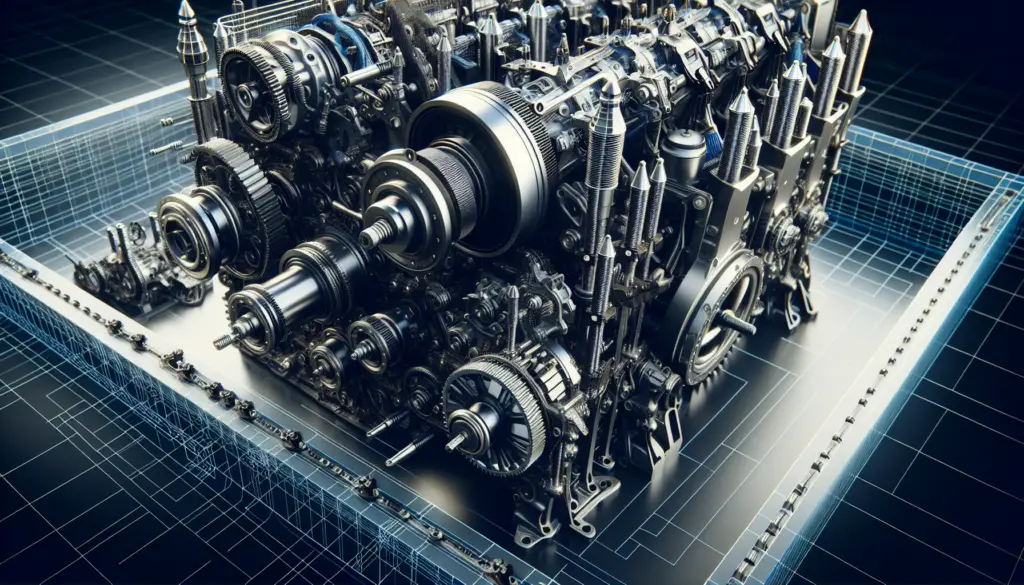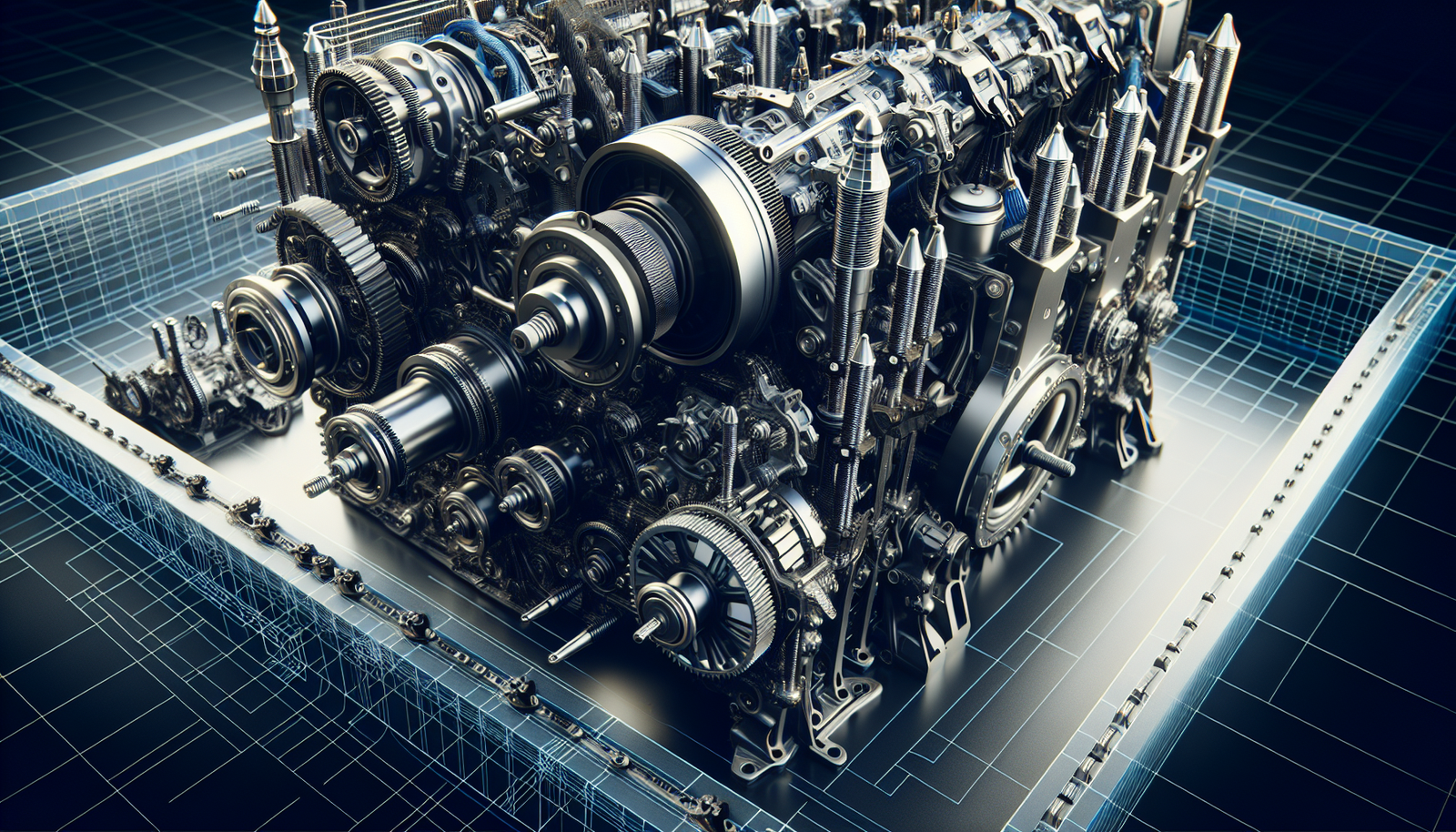Imagine you’re standing on the deck of a sleek speedboat, the wind rushing past as the powerful engine propels you effortlessly across the crystal blue waters. This thrilling experience is made possible thanks to the incredible advancements in boat engine technology that have been achieved over the years. In this article titled “The Evolution Of Boat Engine Technology”, you will explore the fascinating journey of how these engines have evolved from their primitive beginnings, to the innovative designs of the present day, and look ahead at what the future may hold. Featuring riveting tales of challenges overcome and the ingenious solutions that have been engineered, this article promises to be as engaging as it is informative.

Early Inventions in Boat Engine Technology
The birthplace of boat engine technology lies in the transformative innovations of the 18th century. Prior to this, boats were limited to manual or wind power. Technology revolutionized navigation, bringing significant changes to transportation, exploration, and trade.
The steam engine boats in the 18th Century
The 18th century brought one of the most significant transformations in boat technology, which was driven by the advent of the steam engine. This innovation mechanized the boating world, replacing manual and wind power with the consistent and controlled force of steam. The first steam-powered boats were primarily used for trade and transportation, offering a remarkable improvement in speed and efficiency.
The introduction of internal combustion engines
The internal combustion engine signified another leap forward in boat engine technology. It replaced steam engines, which were cumbersome and energy-inefficient due to the need for large amounts of coal and water. In contrast, internal combustion engines offered more power, consumed less fuel, and required less space, thereby enabling the construction of faster and more efficient boats.
The Advent of Diesel Engines for Boats
The birth of diesel technology marked a transformative era in the world of boat engines. Diesel engines revolutionized the industry with their higher efficiency and greater durability compared to their predecessors.
First application of diesel engines in boats
Although the diesel engine was invented in the late 19th century, it wasn’t until the early 20th century that it found its application in boats. Initially, the weight and size of these engines limited their usage in smaller boats. However, advancements over time made them more compact and lighter, leading to their widespread adoption.
Advancements and improvements in diesel engines
Over the years, diesel engines have seen a myriad of improvements. Technological advancements have led to better fuel efficiency, lower emissions, and greater power. Today, these engines are highly sophisticated, combining mechanical and electronic components for enhanced performance and control.
Popularity and advantages of diesel engines
Diesel engines are popular among many boaters due to their long-life expectancy, efficiency, and power. They are particularly favored for larger boats and commercial vessels that require significant power and constant operation.
Electric Boat Engines
The growing concerns about environmental sustainability have led to the development and promotion of electric boat engines. They offer an eco-friendly alternative to traditional engines, which emit greenhouse gases and contribute to noise pollution.
Early electric boat engines
Electric boat engines made their debut in the late 19th century. These early versions were extremely simple, consisting of an electric motor and a battery for energy storage.
Revolution of electric boat engines in the 21st Century
The 21st century has brought a revolution to the world of electric boat engines. With advancements in battery technology and electric motors, these engines have become more powerful, efficient, and reliable. Electric engines now offer a level of performance that’s comparable to, or even surpasses, that of their diesel and gasoline counterparts.
Benefits and challenges of electric boat engines
Electric boat engines offer several advantages. They are quiet, produce zero emissions, and require less maintenance than gas or diesel engines. However, they also come with challenges. Their biggest limitation is the limited range, as batteries can only store so much energy.

The Rise of Outboard Motors
As boat engine technology continued to advance, the outboard motor emerged as a popular choice for small boat owners.
Invention of the first outboard motors
The first outboard motor was developed in the early 20th century. It was a revolutionary invention that allowed for more efficient propulsion and maneuverability for smaller boats.
Evolution and improvement of outboard motors over time
Over the years, outboard motors have seen significant developments. They are now lighter, more powerful, and more efficient than their early counterparts. Advanced technology has allowed for improved features such as electronic fuel injection and sophisticated control systems.
Popularity of outboard motors among small boat owners
Outboard motors are particularly popular among small boat owners due to their affordability and ease of maintenance. They are also favored for their simplicity and versatility, with the ability to be easily removed or replaced.
Inboard Engines
Unlike outboard motors that are mounted on the exterior of a boat, inboard engines are located within the hull. This configuration offers distinct advantages, but it comes with its own set of challenges.
Introduction of inboard engines
The development of inboard engines represented a significant milestone in boat engine technology. Their placement within the boat’s hull provides a lower center of gravity, increasing stability and improving handling in rough waters.
Types of inboard engines: Direct drive, V drive, and Jet drive
Inboard engines come in different types, including direct drive, V drive, and jet drive. Direct drive engines are located in the center of the boat, offering balanced weight distribution. V drive engines are positioned at the back, creating more interior space. Jet drives, on the other hand, have no external propeller, making them safer for water sports.
Comparison between inboard engines and outboard engines
Each engine type has its strengths and weaknesses. While inboard engines offer better handling and capacity for larger boats, they can be more difficult and costly to maintain. Outboard engines, in contrast, are easier to service and replace, making them a more popular choice for smaller boats.
Hybrid Boat Engines
As environmental consciousness grows, the move toward sustainable options has led to hybrid boat engines. They combine an internal combustion engine with an electric motor, offering the best of both worlds.
Introduction and advancement of hybrid boat engines
Hybrid boat engines were introduced as a cleaner alternative to traditional engines. They leverage the advantages of both internal combustion engines – power and range – and electric motors – efficiency and environmental friendliness.
Benefits and limitations of hybrid boat engines
Hybrid engines offer fuel efficiency, reduced emissions, and the ability to sail quietly using electric power. However, they face challenges, including complex design and higher costs.
Case studies of hybrid boat engines
Many boat manufacturers are now offering hybrid options, including companies like Greenline, which prioritize sustainability. They show that hybrid engines can succeed in real-world conditions, dispelling myths about their practicality.
Solar Powered Boat Engines
Harnessing the power of the sun for propulsion, solar-powered boat engines represent the cutting edge of sustainable technology in the boating industry.
Early inventions and developments
Early developments in solar-powered boat technology came in the form of solar panels that powered auxiliary systems, including lighting and navigation.
Current technology and advancements in solar powered boat engines
Continued research has led to more efficient solar panels and better energy storage systems, increasing the feasibility of solar-powered propulsion. Today, you can find a variety of solar-powered boats, from small electric dinghies to larger solar electric yachts.
Benefits and challenges of solar powered boat engines
Solar-powered boat engines offer zero-emissions, quiet operation, and minimal operating costs. However, their performance is highly dependent on sunlight, which can be unreliable.
Fuel Cell Technology in Boat Engines
Fuel cells represent a promising technology in the boat engine world. They generate electricity through a chemical reaction, offering a potential solution for sustainable navigation.
Introduction to fuel cell technology in boats
Fuel cell technology was introduced to the boating industry as a potential solution to the problem of range and refueling time associated with electric boat engines.
Types of fuel cells used in boat engines
There are several types of fuel cells that can be used in boat engines, including proton exchange membrane fuel cells and solid oxide fuel cells. The choice of fuel cell would depend on the size and type of the boat, as well as the range and power required.
Advantages and limitations of fuel cell technology
Fuel cell technology offers several benefits, including high efficiency, quiet operation, and zero harmful emissions. However, challenges remain, such as the need for hydrogen storage and the high cost of fuel cells.
Impact of Environmental Regulations on Boat Engine Technology
Environmental regulations have played a critical role in shaping the direction of boat engine technology. These rules encourage cleaner and more efficient designs, pushing the industry toward greener solutions.
Adoption of cleaner technologies due to environmental concerns
Strict environmental regulations have forced manufacturers to adopt cleaner technologies. Increasingly, companies are focusing on designing engines that are not only powerful but also eco-friendly. This trend has led to the growing popularity of electric, hybrid, and solar-powered boat engines.
Sustainable and eco-friendly advancements in boat engine technology
In response to environmental concerns, there has been a surge in sustainable innovations. These include advances in battery technology, solar power, and hydrodynamics, all aimed at improving efficiency, reducing emissions, and harmonizing boat technology with the natural environment.
Future projections due to environmental concerns
With increasing pressure from governments and consumers alike, it’s clear that the future of boat technology is green. Expect to see continued innovations in sustainable propulsion, including advancements in renewable energy and more efficient designs.
Future of Boat Engine Technology
The world of boat engine technology is a dynamic one, constantly shaped and redefined by advances in science and industry.
Emerging trends in boat engine tech
There are several emerging trends that are set to revolutionize boat engine technology. These include the increased adoption of electric engines, fueled by advancements in battery technology, and the use of artificial intelligence (AI) and Internet of Things (IoT) technologies for better boat control and navigation.
Potential future advancements
The future holds the promise of even more revolutionary advancements. Potential developments include more powerful and efficient electric engines, further advances in hybrid technology, and even the use of hydrogen as a clean power source.
The role of AI and IoT in future boat engine technology
AI and IoT are expected to have a significant impact on the future of boat engine technology. They promise to bring about smarter engines that are capable of self-diagnosis and troubleshooting, increased autonomy in navigation, and increased connectivity.
In conclusion, boat engine technology has come a long way since the days of steam engines. From diesel power to electric motors, outboard to inboard engines, and emerging innovations in green propulsion, there have been fantastic strides in engineering, design, and technology. With the additional integration of AI and IoT, the future of boat engines is not just innovative but also sustainable. Here’s to smoother, cleaner waves ahead!

